
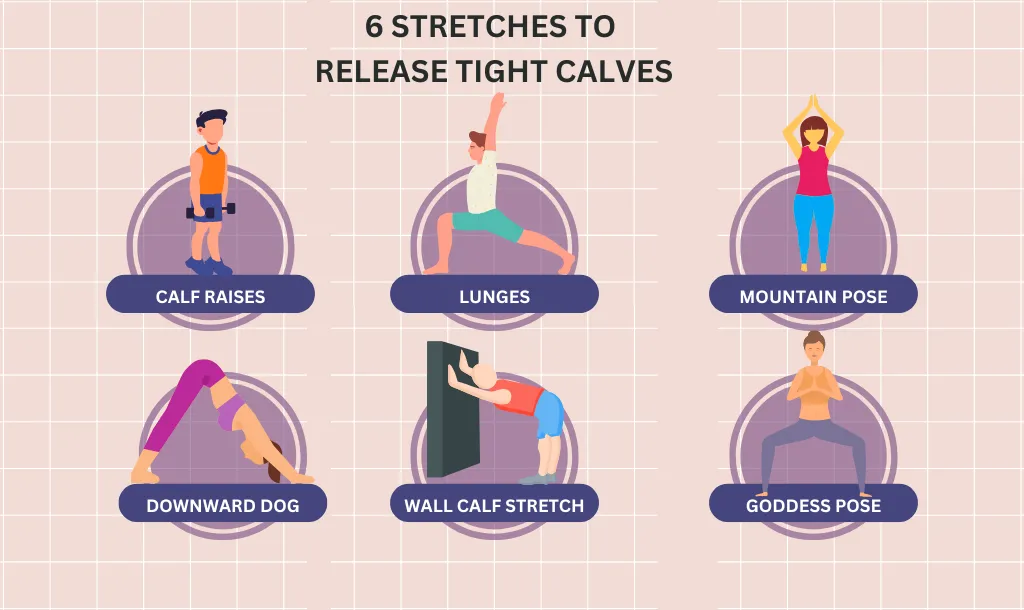
Tight calves can affect anyone—whether from high-impact activities like running, hiking and intense leg workouts or long hours of sitting. If left unaddressed, they can cause discomfort while walking, stiffness after prolonged sitting, or pain when climbing the stairs.
Calf tightness can also cause knee and hip pain. Umesh Balavaradaraju, a certified yoga instructor at MyYogaTeacher, explains, “Calf muscles control ankle and foot movement. When they become stiff, they limit mobility, forcing the knees and hips to compensate during activities like walking, running, or squatting.”
While tight calves have many causes and can lead to discomfort or numbness, targeted stretches can help relieve tension.
These stretches can improve flexibility, relieve tension, and prevent discomfort:
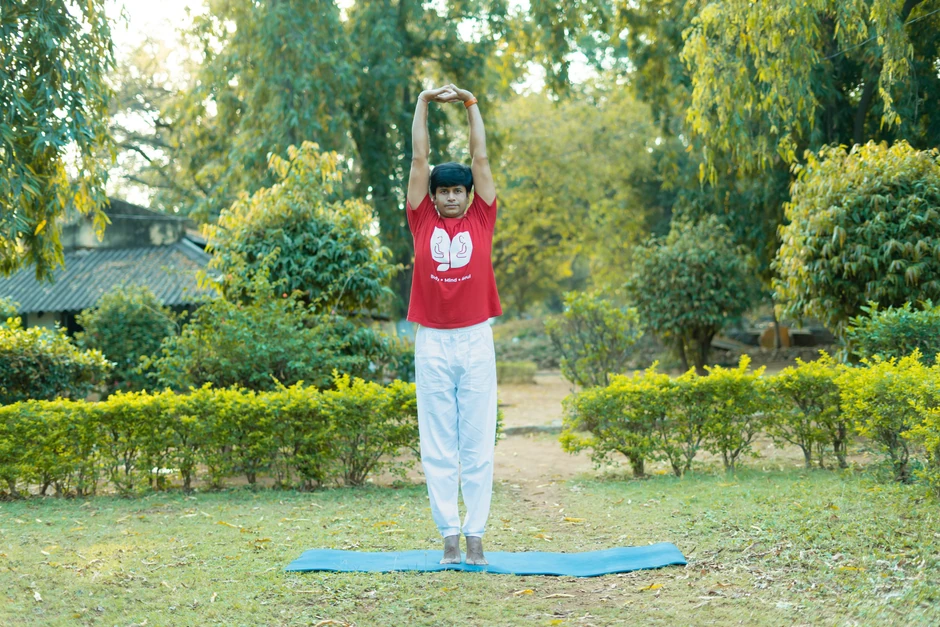
This pose helps stretch the calves while improving posture, balance, and body awareness. Holding the pose with engaged legs can also relieve stiffness in the lower legs.
Stand tall with feet hip-width apart, arms relaxed by your sides.
Make sure you’re standing evenly across both feet.
Engage your thighs, lift your kneecaps slightly, and lengthen your spine.
Press firmly into the ground while reaching the crown of your head upward.
For a deeper calf stretch, you may lift your heels off the floor.
Hold for 30 seconds, breathing deeply.
Lower your heels and relax before repeating.
Calf Raises can strengthen the calf muscles, improve ankle stability, and enhance circulation, reducing tightness and fatigue in the lower legs.
Stand tall with feet hip-width apart, holding onto a wall or chair for balance if needed.
Slowly lift your heels off the ground, rising onto the balls of your feet.
Hold for a second at the top, engaging your calves.
Lower your heels back down with control.
Repeat for 10-15 reps, completing 2-3 sets.
Try single-leg calf raises or perform the exercise on a step for a deeper stretch.
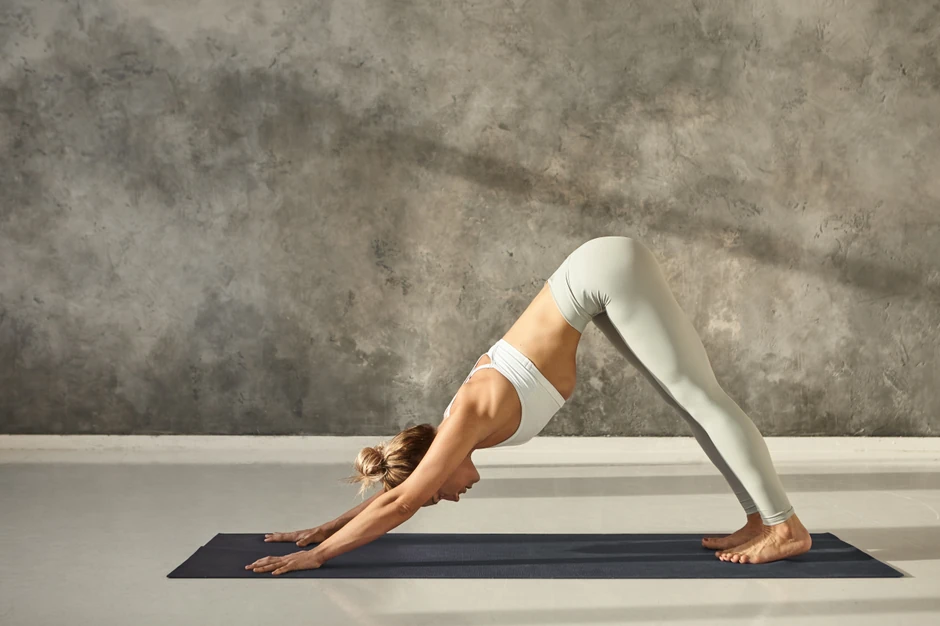
A deep stretch that targets the calves while also relieving tension in the hamstrings and lower back.
Start in a plank position with hands and feet on the ground.
Lift your hips toward the ceiling, creating an inverted V-shape.
Keep your heels pressing toward the floor and hold for 20–30 seconds.
For a deeper calf stretch, bend one knee at a time while keeping the other leg extended, gently pedaling your heels toward the ground.
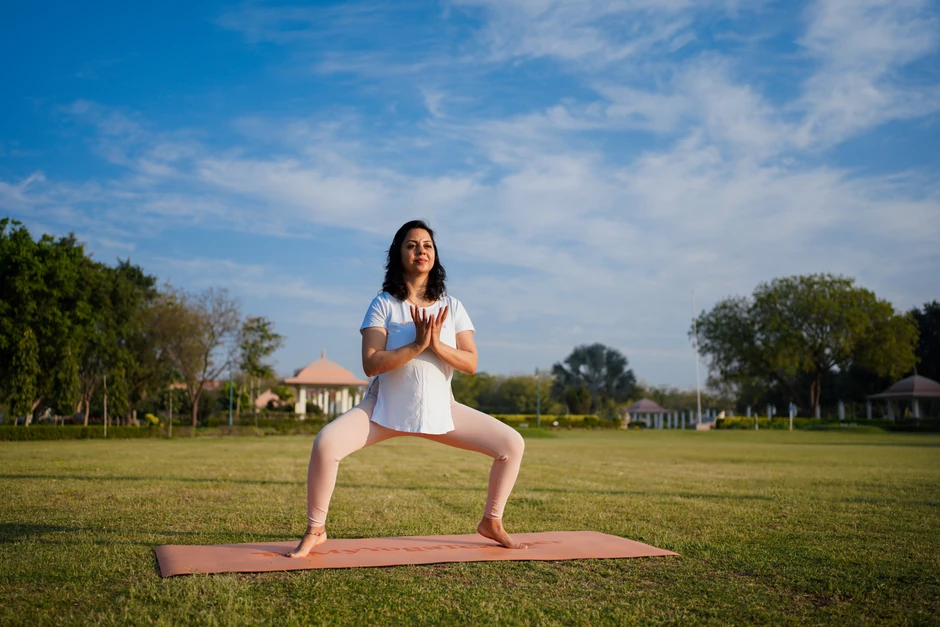
Goddess Pose involves a deep squat to engage and strengthen the calves while also improving flexibility in the lower legs. Lifting the heels further intensifies the stretch, enhancing ankle mobility and stability.
Stand with feet wide apart, toes pointing slightly outward.
Bend your knees and lower into a squat, keeping your back straight.
Press into the balls of your feet, lifting your heels off the ground.
Hold for 20-30 seconds while maintaining balance.
Slowly lower your heels and straighten your legs.
Repeat 2-3 times.
This stretch helps loosen tightness in the lower calf. Bending the knee allows for a deeper stretch, making movement feel easier.
Stand facing a wall and place your hands on it for support.
Step one foot back and slightly bend both knees.
Keep your back heel on the floor and hold for 20–30 seconds before switching sides.
Walking forward and backward on the toes strengthens the calf muscles and improves overall balance. It also trains the muscles to support foot and ankle stability, reducing the risk of tightness and strain.
Stand tall and rise onto your toes, keeping your heels off the ground.
Walk forward 10-15 steps, maintaining balance and control.
Then, walk backward the same distance, staying on your toes.
Lower your heels to rest and repeat for 2-3 rounds.
Tight calves can manifest as:
A persistent soreness or dull ache in the lower legs
Stiffness when walking or climbing the stairs
Inflexibility or limited range of motion when fully extending or flexing the foot
Muscle cramps or sharp pains, especially after a strenuous activity or at night
Fatigue or heaviness in the calves after prolonged standing or sitting
Here’s what causes these symptoms:
Preventing tight calves goes beyond just stretching. Here are expert-backed strategies to relieve and prevent calf tightness in the long run:
Want personalized guidance? Book a free 1-on-1 session with a MyYogaTeacher coach and say goodbye to tight calves!
You can release tight calves by incorporating a combination of regular stretching, massage, and mobility exercises into your routine. Stretches like Downward Dog, Calf Raises, and Mountain Pose can help loosen the muscles. Foam rolling and gentle massages improve blood flow and reduce muscle knots. Staying hydrated, maintaining proper posture, and wearing supportive footwear can also prevent recurring tightness.
Deficiencies in essential minerals like magnesium, potassium, calcium, and sodium can contribute to muscle cramps and tightness. These electrolytes play a crucial role in muscle function and hydration. Low levels of vitamin D may also weaken muscles and lead to stiffness. Ensuring a well-balanced diet with adequate nutrients can help prevent calf tightness.
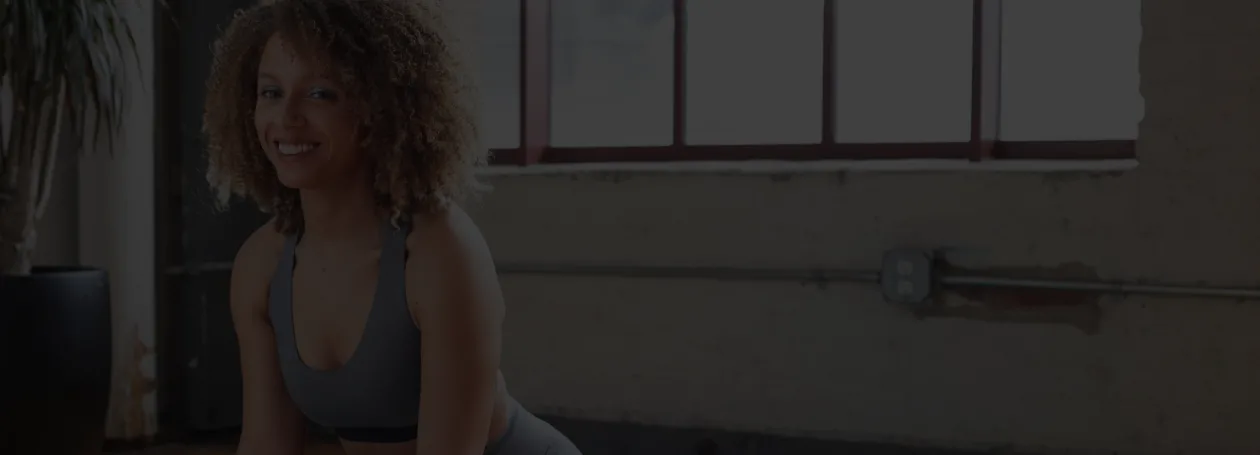
Receive personalized guidance tailored to your unique fitness goals, live with a dedicated coach—no credit card required.